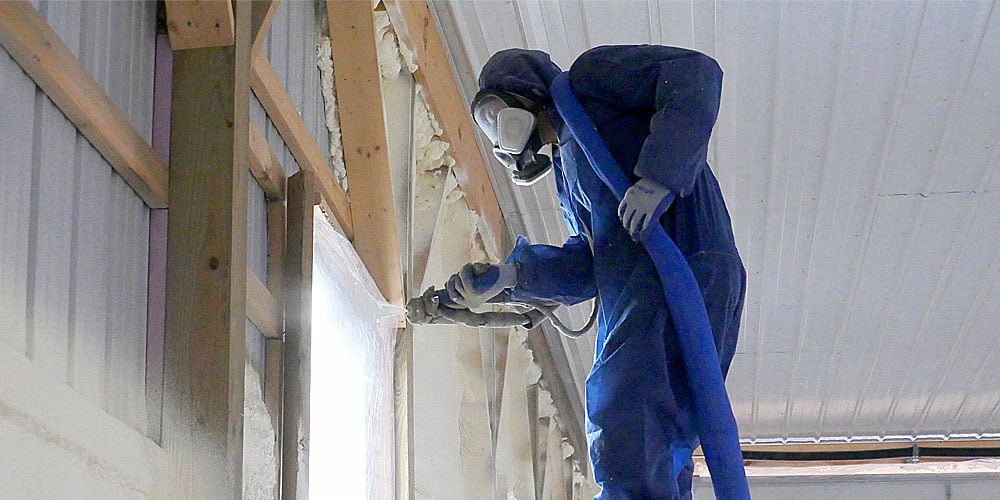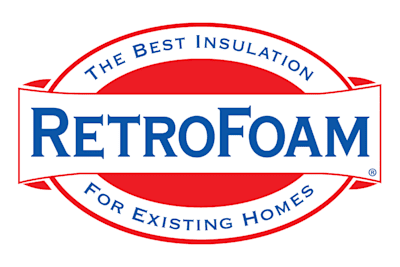Radiant Heat in Commercial Buildings: The Role of Spray Foam Insulation


When it comes to heating a 20,000-square-foot commercial building, you might assume a massive forced air system is the only way to go.
But with the right approach, you can achieve an energy-efficient and cost-effective solution.
Let’s dive into the benefits of radiant heating in commercial buildings and how spray foam insulation enhances this method, helping you save both energy and money.
How Should You Heat a Commercial Building?
The way you heat a commercial space largely depends on how the building will be used.
For instance, a warehouse designed primarily for storage doesn’t require scalding hot temperatures – just a steady range to keep it above freezing and below overly warm. This simplifies the approach to heating.
Instead of a traditional forced air system, radiant heating can provide an efficient solution for large buildings like pole barns or warehouses. Radiant tube heaters, for example, distribute heat evenly, reducing energy waste. But there’s a key factor that makes this approach truly effective: insulation.
Spray Foam Insulation: A Game-Changer for Radiant Heat
Insulation plays a vital role in maintaining a consistent indoor temperature, especially in a building as large as a warehouse.
For the warehouse in the above video, spray foam insulation was strategically used throughout.
- Closed cell spray foam was applied to the walls, providing a rigid, high R-Value barrier that resists air and moisture infiltration.
- Open cell spray foam was installed in the ceiling, offering superior sound dampening and thermal performance.
This combination creates an airtight building envelope that reduces heat loss during the colder months and limits heat gain during the warmer months.
The result? Radiant heating systems, like ceiling-suspended radiant tube heaters, can operate more efficiently because the building retains the heat they generate.
Why Radiant Heating and Spray Foam Insulation Work Together
When paired with spray foam insulation, radiant heating systems excel at maintaining consistent temperatures.
Here’s why radiant heat and spray foam insulation are a perfect match.
Enhanced Energy Efficiency
Spray foam insulation reduces the amount of heat escaping the building, meaning the radiant heating system doesn’t have to work as hard.
This leads to lower energy consumption and, ultimately, smaller energy bills.
Cost Savings
By creating a well-insulated building envelope, you can install a smaller heating system.
A smaller system has lower upfront costs and uses less energy, which translates to long-term savings.
Comfortable, Even Heating
Radiant heating eliminates the cold spots often associated with forced air systems.
Combined with the airtight barrier provided by spray foam insulation, you’ll enjoy consistent warmth throughout the building.
The Construction Equation: Building for Efficiency
Several factors contribute to the overall efficiency of a commercial building when planning its construction.
These include excavation, framing, wiring, plumbing, and, of course, insulation. Foam insulation is a critical piece of the puzzle because it directly impacts your utility costs.
A well-insulated building requires a smaller heating system to maintain temperatures. This not only reduces your initial investment but also keeps monthly heating costs in check. The efficiency of radiant heating combined with spray foam insulation ensures that you’re maximizing your budget while minimizing energy use.
Do You Really Need a Large Heating System?
A common misconception is that a larger building automatically requires a massive heating system.
In reality, a Manual J test – a calculation used to determine the precise size of the heating and cooling system needed for a building – often reveals that a smaller system is sufficient, especially when paired with proper insulation.
For the 20,000-square-foot warehouse example, radiant tube heaters combined with spray foam insulation were more than enough to meet the property owner’s goals. The insulation reduced heat loss, allowing the radiant heaters to work efficiently without the need for an oversized forced air system.
The Bottom Line: Efficiency Through Insulation and Heating Choices
Whether you’re constructing a small garage-sized pole barn or a sprawling commercial warehouse, your heating solution should match the building’s purpose and design.
Pairing radiant heating with spray foam insulation offers an efficient, cost-effective, and environmentally friendly way to maintain comfortable temperatures.
If you’re ready to learn more about insulating pole barns or other commercial buildings, visit our Learning Center for videos, articles, and tips on spray foam insulation. By making informed choices, you can turn any construction project into an example of energy efficiency.
Related Articles
Benefits of Spray Foam Insulation on Commercial Garage Doors
Understanding the Installation Process of Spray Foam Insulation for Commercial Buildings
About Amanda Emery
Amanda previously has worked as a breaking news and crime reporter, TV news producer, and editor. As a journalist, she has won several awards from The Society of Professional Journalists - Detroit Chapter and the Michigan Press Association. Amanda uses her experience as a journalist to write content that will help educate homeowners on foam insulation benefits. When Amanda isn’t writing, she’s spending time with her husband Chris, daughter Lilith-Maeve, and rescued huskies Danger and Wendigo. She also loves knitting, making art, and cooking.


